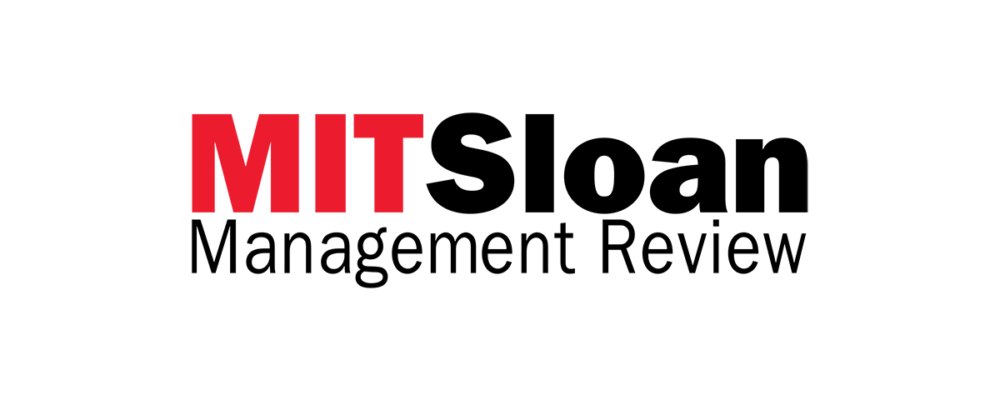Carolyn Geason-Beissel/MIT SMR | Getty Images
The transition to an economy with radically lower greenhouse gas (GHG) emissions is not a matter of if but of when and how. Discussions with executive teams about how they are navigating sustainability issues, however, too often remain framed around the question of “Should my business become more sustainable?” rather than “How should my business become more sustainable — and what advantages might that bring?”
Their hesitancy is understandable: The media landscape is littered with headlines calling out bumps in the road — troubled offshore wind initiatives, interminable backlogs and permitting issues for clean energy projects, seemingly sluggish electric vehicle (EV) sales, and, of course, anti-ESG sentiment.
Often, these headlines are framed in a manner that suggests that progress toward a low-carbon economy is stalling — something that may be driven by the loss aversion bias, whereby people fear losses more than they value gains. In this particular case, predictable and known business models are the things that are “lost.” So it’s not surprising that humans demonstrate a preference for data that might support their ability to hang on to the status quo. Fixating on speed bumps and postponing the decision to act on a clear long-term trend is effectively choosing a wait-and-see or go-slow strategy — which is profoundly more risky than trying something new and capitalizing on the opportunity presented by the energy transition. A strategy grounded in inaction amounts to an implicit all-in bet on a future scenario where the transition to a low-carbon economy fails to materialize.
Get Updates on Transformative Leadership
Evidence-based resources that can help you lead your team more effectively, delivered to your inbox monthly.
Please enter a valid email address
Thank you for signing up
But the reality is that there is strong momentum for the transition to a low-emissions world, as these five long-term sustainability drivers show.
1. The “green premium” is disappearing, and key clean technologies are reaching tipping points. Despite recent supply chain and interest rate challenges, solar and wind — cornerstones of the renewable energy sector — have experienced dramatic cost reductions over the past decade. According to energy think tank RMI, from 2012 to 2022, the costs of solar and onshore wind power fell by 80% and 57%, respectively. In 2022, solar generation was 29% cheaper than the least-expensive fossil fuel solution on a lifetime basis, according to the International Renewable Energy Agency. New solar installations globally exceeded 400 gigawatts in 2023, a thousand times greater than the amount in 2003.
2. Despite supply-demand imbalances, EV growth remains exponential. While adoption rates vary between countries, it is taking about six years for EVs to account for 10% of vehicle sales — and in leading countries, it takes another six years for them to reach 80%. In the U.S., hybrid, plug-in hybrid, and EVs accounted for more than 16% of light-duty vehicle sales in 2023 up from less than 13% a year earlier and after hovering in the low single digits through the 2010s. At the same time, the average price for a battery electric vehicle fell more than 24% from its peak in mid-2022, thanks in part to new models, lower battery costs, and tax incentives. Improving EV economics and performance stimulates infrastructure development, which in turn stimulates EV demand, resulting in a reinforcing feedback loop.
3. Regulation and policy have provided, and continue to provide, carrots and sticks. Funding from the Inflation Reduction Act and other legislation is already catalyzing private sector activity across a wide range of clean technologies. Because many of the act’s provisions are uncapped tax credits, the ultimate impact could far exceed initial estimates. There is, of course, debate about the future of such programs, but because the Inflation Reduction Act was an act of Congress and its benefits are being felt across numerous states, it seems likely that it will persist in some form.
Furthermore, nearly all large multinational companies in the world are already — or likely will be in the very near future — subject to GHG disclosure regulations. The Corporate Sustainability Reporting Directive is a substantial requirement for companies operating in Europe; future requirements in the U.S., whether they be the eventual Securities and Exchange Commission regulations or those from states like California, will make it highly likely that even modest-sized U.S.-based companies will face some form of GHG disclosure requirements. To be sure, disclosure doesn’t necessarily compel action. However, the need to answer questions from customers, investors, and other stakeholders can kick-start a company’s sustainability journey: The need to disclose creates the need to collect and manage sustainability data, which in turn creates the preconditions for measurement and accountability, both internally and externally.
4. Sustainability commitments have grown significantly. This virtuous cycle, catalyzed by regulation, is also reinforced by the significant increase in companies pledging to cut emissions. More than 90% of global GDP is now covered by a net-zero goal. According to the Science Based Targets initiative (SBTi), as of August 2024, the number of companies with approved SBTi targets had grown about tenfold since 2020. This is significant because publicly announced sustainability commitments lead to further pressure from customers, employees, shareholders, and other stakeholders for a company to create, disclose, and manage emissions. One of the major tenets of SBTi is a commitment to manage Scope 3 emissions, particularly those generated by suppliers. The systemic pressure of large companies on their suppliers to decarbonize is yet another reinforcing mechanism driving the need to transform operations. During last year’s Climate Week NYC event, we heard the story of a “token climate believer” (in her words) on a private company’s board that was chaired by a “self-described climate denier.” By her account, the company’s stance changed 180 degrees when customers started to ask about the company’s emissions.
5. Changing consumer demographics leads to changing consumer behavior. An oft-cited objection to becoming more sustainable is that “customers aren’t willing to pay for sustainability.” Indeed, data from Deloitte’s global ConsumerSignals survey shows that some consumers have been pulling back from sustainable purchases in the face of economic uncertainty. But the purchase decisions of new customers entering the market are increasingly shaped by sustainability. Roughly 60% of Gen Z and millennial respondents to Deloitte’s 2023 survey said they were willing to pay more for sustainable goods and services. And climate change itself is likely to shift consumer behavior. Across 17 countries, a majority of respondents (roughly 6 in 10) said they’d experienced extreme weather in 2022 and 2023, particularly extreme summer heat, and those who had were significantly more likely to report making sustainable consumption choices. As the impacts of climate change become more frequent and severe, we could see growing awareness and action from consumers.
The purchase decisions of new customers entering the market are increasingly shaped by sustainability.
A cautious executive might find reason to doubt one or more of these drivers. The best way to evaluate a set of strategy choices is to ask “what would have to be true” for that strategy to be the right one. There are several conditions that would need to be true to support a wait-and-see or go-slow approach. First, the consensus in the scientific community on climate change would have to move from unequivocal to uncertain. In other words, climate experts would need to discover new evidence that proves that most of them have been wrong to date. Second, even if you were skeptical about climate science, you’d also have to believe that the skeptic “community” would grow large enough to reverse the overall momentum and capital flows to decarbonizing solutions and climate tech. And finally, you’d have to believe that low-carbon solutions won’t quickly be able to compete with incumbent solutions on cost and performance. Theoretically, anything could happen, but would you bet your company on it?
It strikes us that the things that would have to be true are collectively very long odds, making inaction a poor bet for your company’s strategy. Importantly, it doesn’t matter whether you believe these things will or won’t (or should or shouldn’t) happen; many of the actors that shape your company’s future do and are acting accordingly. Even if you discount all the data and arguments above (serving either as devil’s advocate or entrenched climate skeptic), at the very least, taking action now can serve as an insurance policy against the possibility that you’re wrong.
The best leaders realize that their own beliefs and attitudes are less important than those of the company’s customers, employees, suppliers, investors, and other important stakeholders. The beliefs of those stakeholders shape the context in which the business competes. Even businesses whose leaders are skeptical about climate science will need to operate in a world where most of their stakeholders pursue a reality shaped by opposing beliefs.
Leaders are thus presented with an important choice: Take action now, get ahead of the curve, and position their companies to win in a decarbonized economy; or wait and see how it plays out and risk being rushed, unprepared, or left behind when action is compelled by regulation or competitive pressures. We think Door No. 1 is a clear correct choice. Will readjustments be necessary? For sure. Organizations may get many things precisely wrong, but those will pale in comparison to the opportunities businesses will unearth by proactively positioning themselves for a low-carbon future.
Reprint #:
“The MIT Sloan Management Review is a research-based magazine and digital platform for business executives published at the MIT Sloan School of Management.”
Please visit the firm link to site






